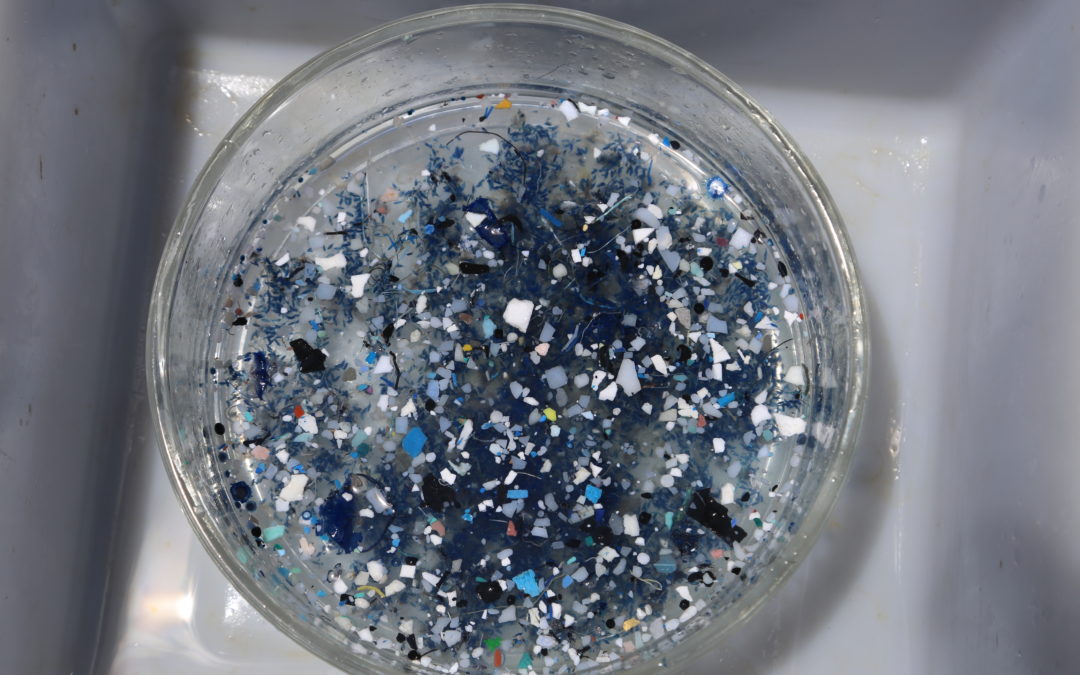Check out all 2016/2017 South Pacific Expedition Blogs here.
Remember eating sprinkles on cupcakes as a kid? The tiny little colorful sugary beads… So colorful and delicious! And always associated with good times… but, if you spilled them, man oh man, what a task it was to clean up all those hundreds of colorful tiny sprinkles. This thought has been running through my head over the last few days as we’ve been inspecting more and more trawls heavily laden with plastic…
We began our one-hour trawl samples a few days ago as we crept closer and closer into an accumulation zone of the South Pacific Sub Tropical Gyre. I say ‘an’ rather than ‘the’ because we have had several High Pressure systems showing up within the sample area and we know that these high pressure systems create the winds that circulate the surface currents into sub gyres / accumulation zones. Generally, in each of the oceans gyres there is a permanent pressure system that creates an accumulation zone, which is what we have been hoping to track and sample. However, it is always changing in size and shape because of the constantly changing oceanic conditions. This means that despite there being a general location where you can expect an accumulation area, you can’t just pin the spot on a map and arrive at the central accumulation zone at any time of the year. Also, factor in the fact that 81% of the Earth’s surface south of the equator is sea water.
It’s like we’re storm chasers, except we are looking for the stellar calms, tracking the weather on our computer navigation system (remember Buck talking about TimeZero on Leg One?). We compare our coordinates to Maximenko’s model of marine debris accumulation determined by the trajectories of Lagrangian drifters and the map of highest plastic concentrations produced by 5 Gyres during their March-April 2011 voyage. From the models, we expected to encounter higher concentrations further west in our journey, however, after several days of steadily increasing quantities of micro debris in our trawls the accumulation zone is apparently currently further East than predicted.
Each day I think we have seen the worst of it, but the sprinkles of debris keep filling the petri dishes more and more, increasing the ratio of plastic to plankton, exponentially it seems. Yesterday, one trawl we pulled in was sickening. Take a good look at the picture, the longer you look the more and more you will see, all the tiny fragments start coming into view, the pieces of line and the overall quantity hits you. One hour!!!
The microplastic concentration levels seem to be equivalent to what they would find in the North Pacific Gyre.
The abundance of macrodebris has been increasing as well. Traveling in a straight line we collected 5 pieces of macro debris in the timeframe of 15-20min. Out here, we estimate concentrations of macrodebris by counting the number of visible pieces we see in a certain period of time. In the North Pacific Captain Moore describes finding more often consumer goods like bottles, toothbrushes, and packaging but here in the South Pacific, we have been finding mostly commercial items such as fishing debris, buoys, rope, fish bins, lines and bulk containers. In the trawls, there has been an excess of line and filaments from rope and fishing nets, in addition to the unidentifiable microplastic fragments.
Today, our trawls seem to be less full of plastics. Together with increased winds and swell conditions, this is a clue that we are moving away from the high pressure cell and the accumulation zone again.
Our next stop is Robinson Crusoe Island where Captain Moore will deliver a talk to the local people, in particular the fishermen, about the extent of the issue. We are grateful for fair winds at the moment and by the looks of things as we should have them for the next couple of days. All crew are well despite a few life changing moments in the past few days and we are fully charged for continuing our task at hand.
I encourage you to share this information around, share the pictures and the stories! Our oceans are brimming with this plastic pollution but we cannot drain a bath tub when the tap is still on!
Stay interested and hungry for change; you are the solution!

